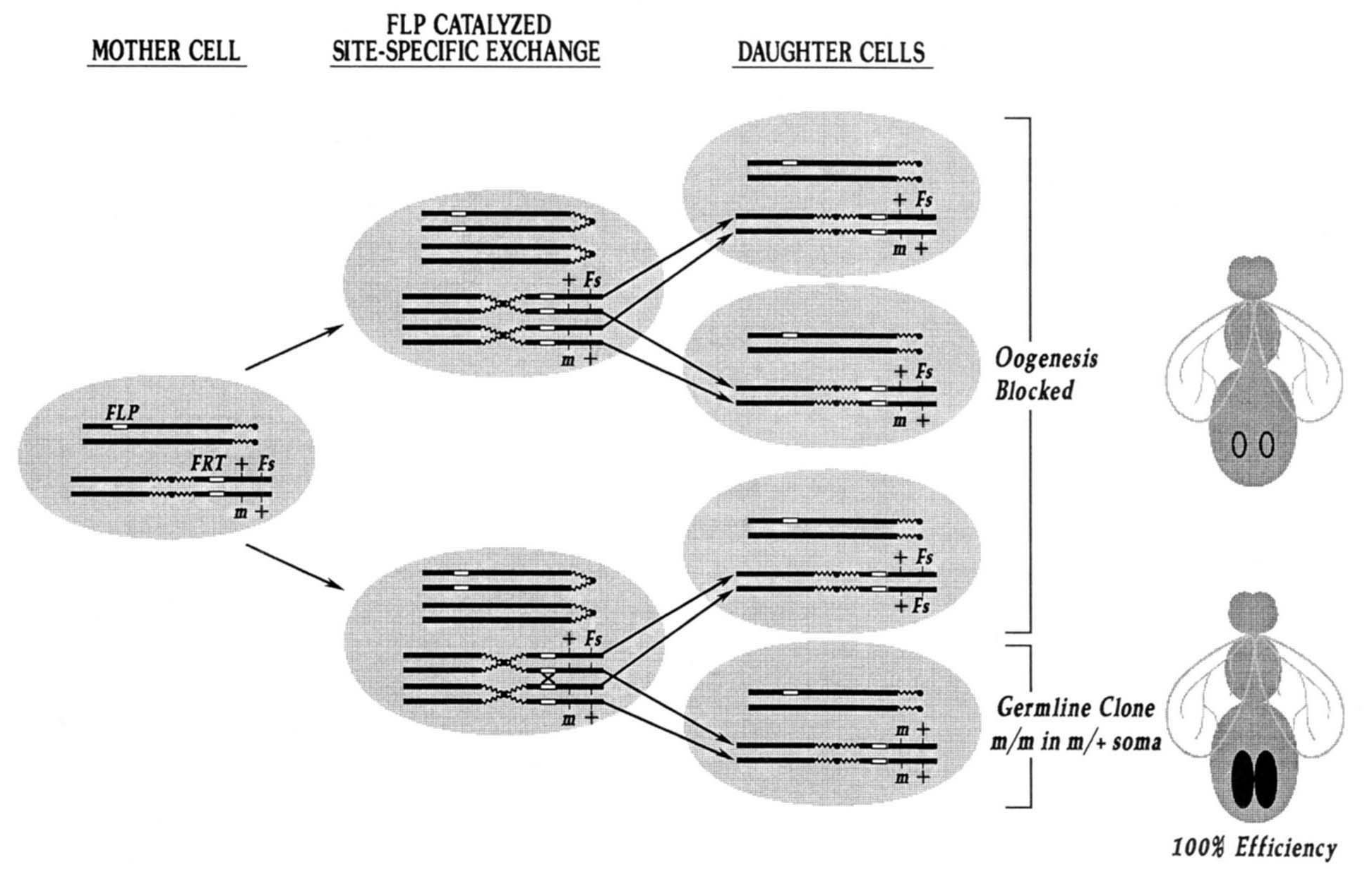The Dominant Female Sterile technique can be used to assess the role of genes in female germ line development. As shown in the figure, it allows one to generate clones of homozygous mutant germ cells in an otherwise heterozygous female.

The Dominant Female Sterile technique can be used to assess the role of genes in female germ line development. As shown in the figure, it allows one to generate clones of homozygous mutant germ cells in an otherwise heterozygous female.

A mutation of interest is first placed distal to an FRT element at the base of a chromosome arm. Then this chromosome is combined with another chromosome bearing the same basal FRT in the presence of a genomic source of FLP recombinase to induce recombination in germ line cells. The trick to recognizing homozygous germ line clones is the presence of a dominant female sterile mutation on the chromosome lacking the mutation. Germ cells heterozygous for the dominant female sterile mutation arrest early in oogenesis, so only cells in the homozygous mutant clone can develop further.
The history of the Dominant Female Sterile technique and its adaptation to the FLP/FRT system were described in Chou & Perrimon (1996): The autosomal FLP-DFS technique for generating germline mosaics in Drosophila melanogaster. Genetics 144: 1673-1679.
Mutations in the ovo gene are used in the Dominant Female Sterile technique. For the clonal analysis of autosomal mutations, the transgene P{ovoD1-18} carrying the dominant ovo[D1] mutation has been inserted on each arm of the second and third chromosomes in the following stocks.
See Dominant sterile and dominant lethal mutations for a general discussion of maintaining stocks with dominant sterile mutations.
See Important Note below regarding the stability of these stocks.
Important Note
Stocks carrying autosomal P{ovoD1-18} insertions have proved to be rather unstable. We think that the dominant sterility is not fully penetrant and that eggs occasionally develop from germ cells carrying the transgene. When this happens, chances are good that meiotic recombination will occur between the P{ovoD1-18} chromosome and the nonbalancer chromosome carrying the dominant male sterile or lethal mutation to give rise to a chromosome lacking dominant mutations. This nonmutant chromosome then has a selective advantage and will take over the stock.
If you maintain these stocks in your lab, it is important to maintain duplicate copies and check them at least once every six months for stock breakdown. Look for appropriate ratios of visible markers and test females that should carry P{ovoD1-18} for sterility.
For the clonal analysis of X-linked mutations, the stocks below carry either dominant mutations in the ovo gene itself or the P{ovoD1-18} transgene.